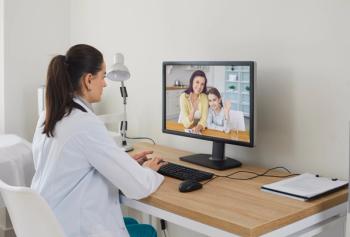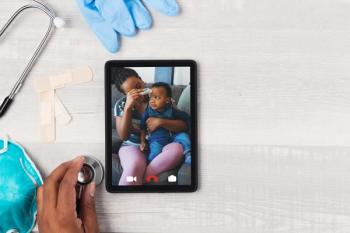
Utilizing telemedicine with medically complex children
Telemedicine helped provide medical care to millions during the current pandemic. Can it be used to ensure better outcomes in children who are medically complex, by providing more access to medical staff?
They may not be common, accounting for just 0.4% of all children, but those who are medically complex also account for 40% of all pediatric deaths and 53% of all pediatric hospital charges. Care for these children can often be fractured and lead to suboptimal care. Creating a comprehensive care program can help lead to better outcomes, but many affected children may not be able to easily access this care. Additionally, time spent in medical settings may lead to unnecessary infections. Telemedicine, which is helping provide access to health care for millions during the current pandemic, could be a potential way to provide treatment or guidance without exposing the child to potential illnesses, but little research has been done into the effectiveness of this approach in this pediatric population. An investigation in Pediatrics offers needed data.1
The investigators ran a single-center, randomized clinical trial that compared comprehensive care plus telemedicine to comprehensive care in medically complex children. They looked at how the 2 treatment plans worked with reducing the number of care dates outside of the home, the reduction in developing serious illness, and the impact on health system costs. The comprehensive care program included low patient to primary care provider ratio, hospital consultation from primary care providers, and 24/7 phone access to providers. For the purpose of the investigation, telemedicine meant patients had access to remote audiovisual communication with primary care providers.
There were 422 medically complex children included in the investigation, with 213 receiving comprehensive care only and 209 receiving comprehensive care plus telemedicine. Investigators found that the probability of a reduction with comprehensive care plus telemedicine versus comprehensive care alone was 91% for average total health system costs ($33,718 vs $41,281 per child-year; Bayesian cost ratio, 0.85 [0.67–1.08]); 95% for rate of children with a serious illness (0.29 vs 0.62 per child-year; rate ratio, 0.68 [0.43–1.07]); and 99% for care days outside the home (12.94 vs 16.94 per child-year; Bayesian rate ratio, 0.80 [0.66–0.98]).
Investigators concluded that the addition of telemedicine to enhance comprehensive care for medically complex children in the home led highly likely reductions in serious illness, the number of days treatment must occur outside of the home, and other outcomes, along with increasing the access to clinicians. They urged further study on the impact of telemedicine plus other care protocols in a larger population of medically complex children. Contemporary Pediatrics board member Russell Libby, MD, who is founder and president of the Virginia Pediatric Group in Fairfax, Virginia, said of using telemedicine for providing care to this population, “…the access to care, convenience, and diversion from more costly care settings was the most obvious benefit, but for families with children with complex medical conditions, especially with children who are technology dependent, telemedicine created an avenue of care that could improve quality, decrease cost, and instill confidence for these families.The continuing potential for strengthening the patient centered medical home through collaboration involving specialists, primary care, and the community has made telemedicine an essential component of pediatric patient care.”
Reference
1. Mosquera R, Avritscher E, Pedroza C, et al. Telemedicine for children with medical complexity: a randomized clinical trial. Pediatrics. 2021;148(3):e2021050400. doi:10.1542/peds.2021-050400
Newsletter
Access practical, evidence-based guidance to support better care for our youngest patients. Join our email list for the latest clinical updates.








